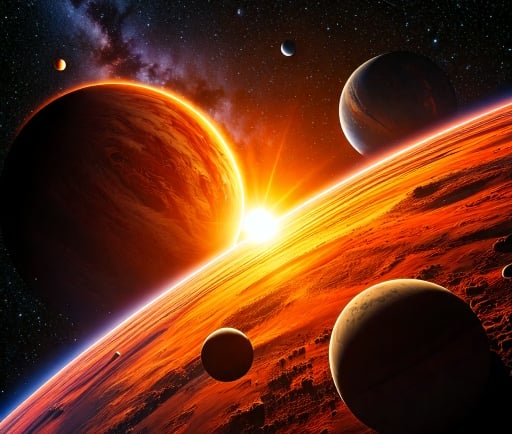The Role of Red Dwarfs in Protecting Solar Systems from Rogue Exoplanets


Understanding Red Dwarfs and Their Habitats
Red dwarfs, classified as M-type stars, are among the most abundant stars in the universe. They are characterized by their small size, low brightness, and long lifespans, often stretching into trillions of years. Due to their cooler temperatures and dim light, red dwarfs may not seem significant in cosmic events, but their influence on nearby celestial bodies and systems is profound. This blog delves into how these stars may act as sentinels against rogue exoplanets that wander through the cosmos.
The Phenomenon of Rogue Exoplanets
Rogue exoplanets, or free-floating planets, are celestial bodies that do not orbit any star. Instead, they drift through space, potentially posing a threat to the gravitational dynamics of solar systems they encounter. These planets can disrupt the orbits of celestial bodies, significantly altering the balance within those systems. The case of red dwarfs comes into play here, as their unique characteristics may provide a form of protection against such rogue entities.
Red Dwarfs as Guardians of Planetary Systems
One of the compelling arguments for the role of red dwarfs in safeguarding solar systems lies in their gravitational influence. The dense and concentrated mass of these stars may subdue the chaotic motion of rogue exoplanets. If a rogue planet comes too close to a red dwarf, it can be captured by the star's gravity, potentially leading to an orbit around it, thus removing the threat it poses to nearby systems.
Moreover, red dwarfs may reduce the likelihood of exoplanet ejections from their systems. The long lifespan of these stars creates a stable environment for existing planets, allowing them to form in relative safety. When rogue exoplanets approach, the gravitational pull of a red dwarf could shower influence on the rogue's trajectory, steering it away from existing solar systems.
The association of red dwarfs with their planetary neighbors can also create a protective barrier. When we consider the immense distance most stars are from each other, a red dwarf's proximity to other systems might provide a cushion against the unpredictable journeys of rogue exoplanets. Thus, even if an exoplanet were to enter a solar system, the presence of a red dwarf nearby might prevent catastrophic interactions.
Conclusion: A New Perspective in Cosmic Relationships
In conclusion, red dwarfs might play a critical role in the dynamics of the cosmos by acting as guardians against rogue exoplanets that travel from one solar system to another. Their gravitational influence may capture wandering planets, while their long-term stability fosters the development of secure, thriving systems. Understanding the interactions within cosmic relationships gives us a fresh perspective on how these unassuming stars could shape the destinies of worlds within their reach. As we expand our knowledge of exoplanets and their behaviors, the case for red dwarfs as defenders of planetary systems becomes increasingly compelling.
